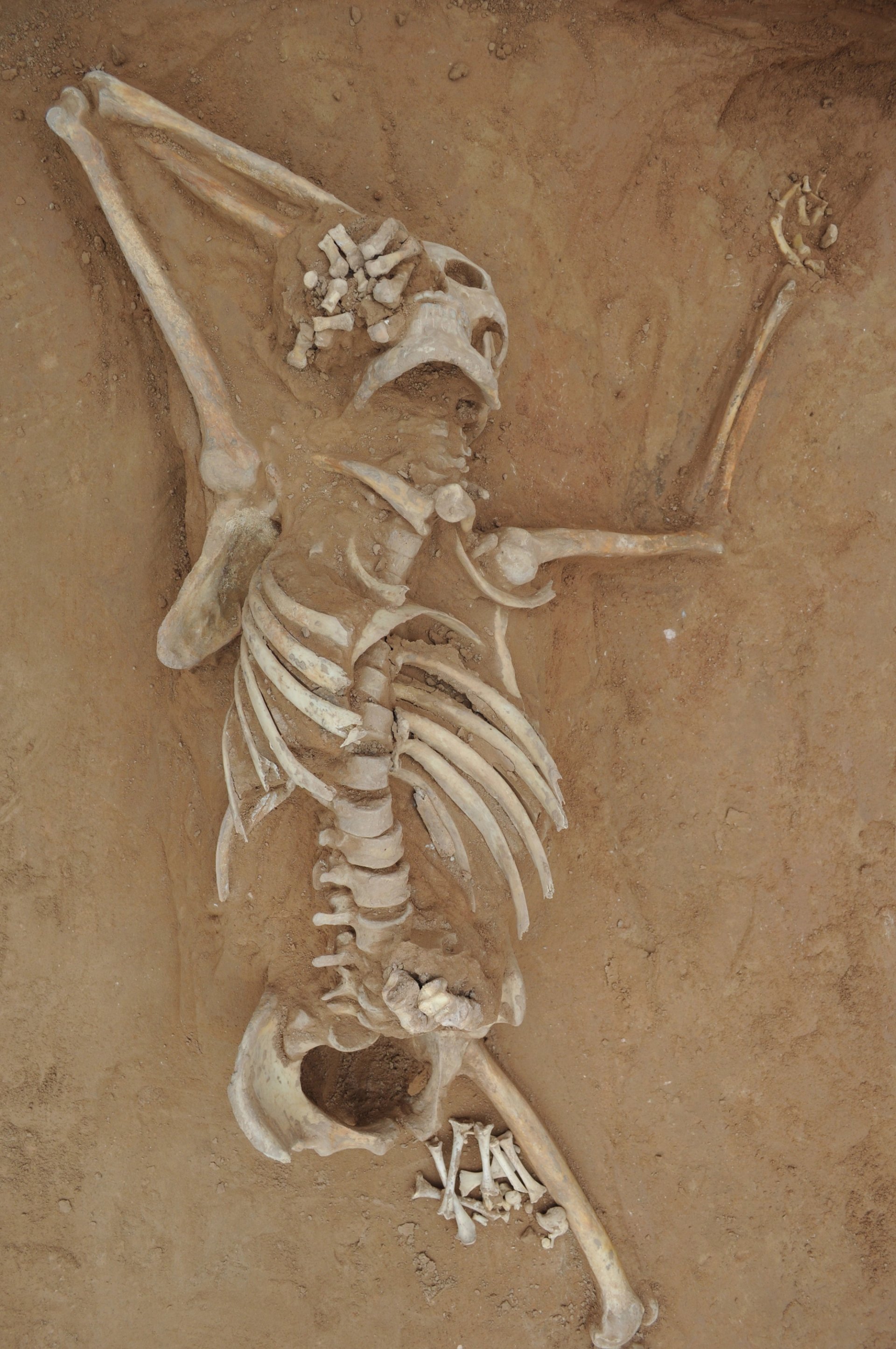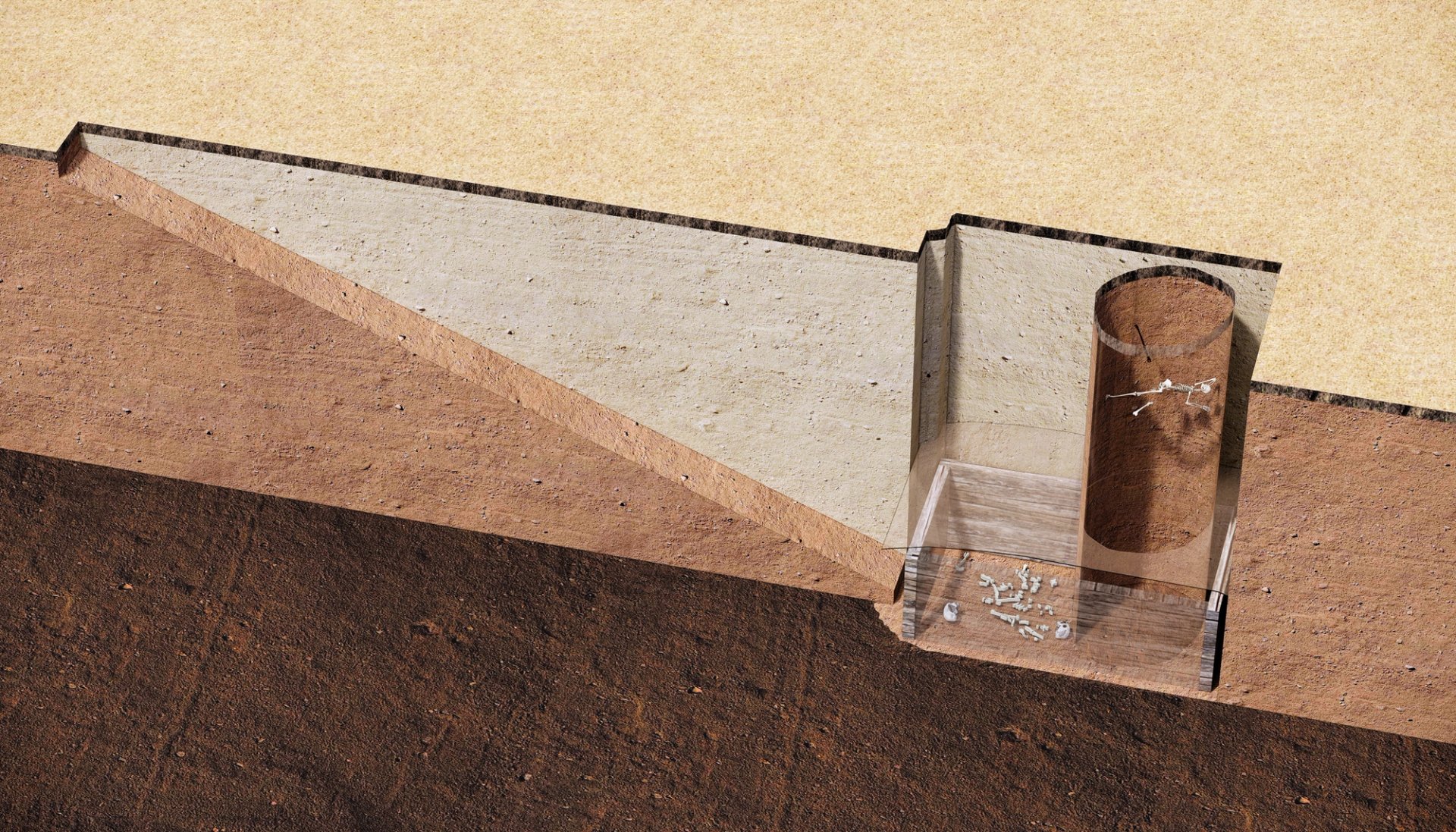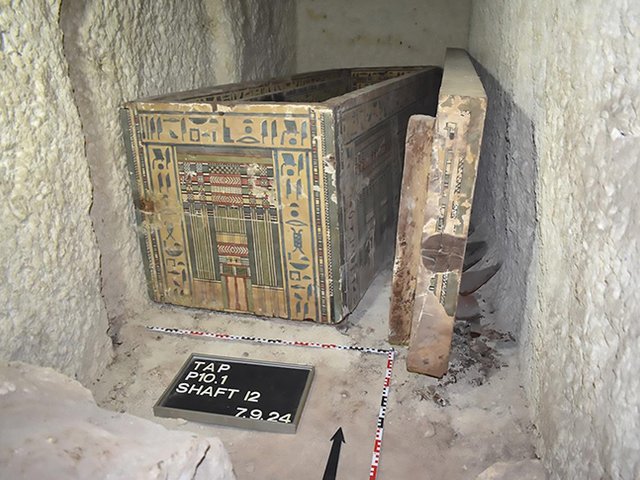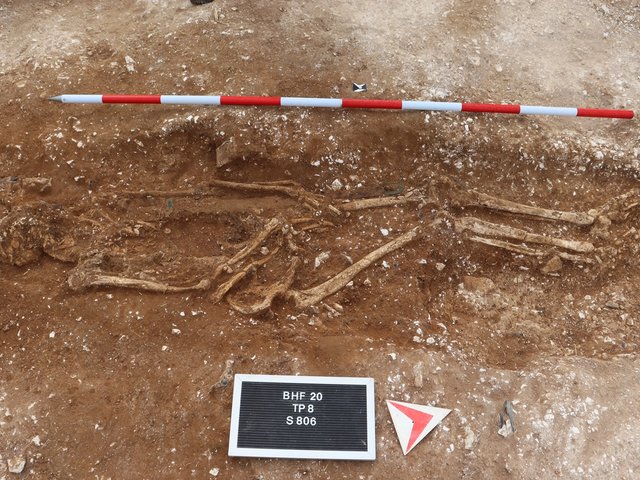Archaeologists have revealed a 1300-year-old Chinese murder mystery in a tomb raiders' shaft.
While excavating the tomb at Shiyanzi cemetery, in China’s north-central Ningxia region, the team discovered the skeleton of a young man riddled with stab wounds.
The man, who the team estimate was around 25-years-old, was thought to have been still alive when he was thrown into the tomb raiders' shaft and left to die.
The archeologists think the murder took place at some point between AD 640 and 680.

A skeleton with unnatural posture was found in a ver- tical grave-robbing passage to the burial chamber © Qian Wang
“The skeleton belongs to a young and healthy individual,” says anatomist and anthropologist Qian Wang, professor in the Department of Biomedical Sciences at Texas A&M University College of Dentistry in the US, and lead author of the study.
“There are 13 sharp-force marks on his skeleton—on the skull, arm, and rib cage. His body was slumped on the soil with his right arm in a protective position covering his badly injured right face.
"Based on these fresh cut marks and possible severity of injuries in the bone and possible important internal organs, this young man died of an assault.”
Archaeologists discovered the man’s remains in the vertical shaft of an ancient robbers’ tunnel, which provided access to a large tomb built during the East Han Dynasty, around AD 25-220. Even so, he appears not to have been one of the thieves, as the shaft had begun to refill with soil by the time of his death.
It is thought the murderers hid their crime by dumping the man into an open shaft in a disused cemetery. Hiding the body in a mass grave was akin to "hiding a leaf in the forest", the researchers report in the journal Archaeological and Anthropological Sciences.
"The victim was dumped in this shaft to purposely kept from sight," the team write. "The strategy of hiding victims’ bodies in existing tombs or graveyards as a means of disposal, akin to 'hiding a leaf in the forest,' has been practiced since antiquity."

An artist's reconstruction of the tomb © Qian Wang
Most of the “sharp-force marks” were found on the man’s skull, while those on his ribs perhaps reflect strikes that penetrated as far as his heart and lungs. A mark on his left forearm appears to have been inflicted when he was trying to defend himself.
Because none of these injuries showed signs of healing, they were inflicted at the time of the man’s death. The man, therefore, is thought to have been attacked by one or multiple assailants armed with sharp-edged weapons, such as swords. A rusted sword was also found about half a metre above his skeleton, suggesting he may have been trying to defend himself.
“We conclude with confidence that the assault victim was not part of the original robbery team based on the fact that the filling of the vertical robbery shaft had accumulated naturally, and the victim was found about 4.5m above the floor of the burial chamber—which means it should be a significant long time after the robbery,” Wang says. “The sword is about 60cm above the skeleton. However, the source of the sword is not clear. We do not know if it was used in the assault.”
Archaeologists have previously discovered the skeletons of grave robbers during excavations. But these had died as a result of tomb or tunnel collapses, rather than as the victims of homicide.
“This discovery is one of a kind. All links to this homicide case have been lost to history,” Wang says. He adds that when describing the trauma and picturing the crime scene, he thought that though the research team can’t bring the murdered man justice, they will prove him innocent of grave robbery. “In this regard, I think we did a good job that brings peace of mind.”





